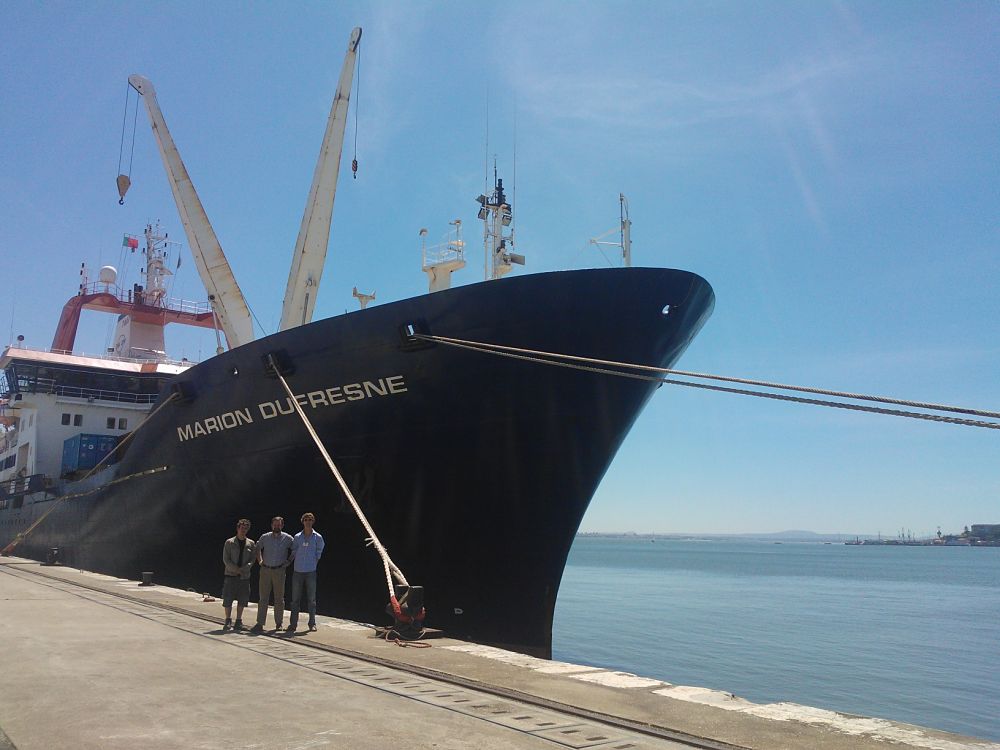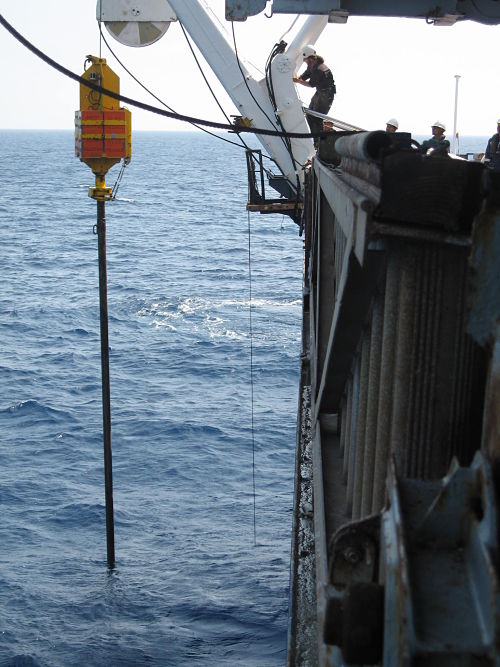Research campaigns: Cold water corals and palaeoceanography at both sides of the Gibraltar Strait
 From 28 May until 22 June, a UGent team of 3 scientists from the Renard Centre of Marine Geology travelled to Lisbon to participate in 2 subsequent campaigns on board of respectively R/V Belgica (Lisbon – Cadiz) and R/V Marion Dufresne (Cadiz – Lisbon). The team was led by David Van Rooij (lecturer Marine Geology and Geophysics), as chief scientist for both missions. The preparations were ongoing during the past 3 years and allowed to perfectly tune both campaigns, both in timing and scientific objectives. Both campaigns will study the evolution of climate-driven bottom currents at both sides of the Gibraltar Strait, as well as their influences on the presence of cold water corals on the seabed mounds they may construct.
From 28 May until 22 June, a UGent team of 3 scientists from the Renard Centre of Marine Geology travelled to Lisbon to participate in 2 subsequent campaigns on board of respectively R/V Belgica (Lisbon – Cadiz) and R/V Marion Dufresne (Cadiz – Lisbon). The team was led by David Van Rooij (lecturer Marine Geology and Geophysics), as chief scientist for both missions. The preparations were ongoing during the past 3 years and allowed to perfectly tune both campaigns, both in timing and scientific objectives. Both campaigns will study the evolution of climate-driven bottom currents at both sides of the Gibraltar Strait, as well as their influences on the presence of cold water corals on the seabed mounds they may construct.
The R/V Belgica “COMIC” campaign has focused on the acoustic reconnaissance of the seafloor (down to 400 m subbottom depth) and collected more than 1000 km of seismic profiles. The international team on board was composed of 10 scientists (5 nationalities) and 15 crew members. Unique connecting profiles were collected over recent drill sites from the “Integrated Ocean Drilling Programme” and some unknown buried levels of cold water coral mounds were discovered. Additionally, marine mammal observations were carried out (dolphins, whales, …).
 The R/V Marion Dufresne “GATEWAYS” campaign was organised within the framework of the European EuroFLEETS project, which has offered - in strong competition - marine research infrastructure (shiptime). The Marion Dufresne is one of the largest vessels available (120 m) with a capacity to acquire sediment cores of 50 m length. It is the first time a Belgian scientist takes the lead of this ship, with an international scientific team (11 nationalities) of 42 scientists and 50 crew members. During a period of 8 days, 250 m of cores were retrieved, at a continuous rate (24/24 h) of maximal 9 cores per day. Some of these drill sites were just discovered by R/V Belgica or modified, based upon the seismic profiling. During the transit days in between the different sites, a “Floating University” session was held for the 15 present BSc, MSc and PhD students. In total, 11 lectures were held over a variety of themes.
The R/V Marion Dufresne “GATEWAYS” campaign was organised within the framework of the European EuroFLEETS project, which has offered - in strong competition - marine research infrastructure (shiptime). The Marion Dufresne is one of the largest vessels available (120 m) with a capacity to acquire sediment cores of 50 m length. It is the first time a Belgian scientist takes the lead of this ship, with an international scientific team (11 nationalities) of 42 scientists and 50 crew members. During a period of 8 days, 250 m of cores were retrieved, at a continuous rate (24/24 h) of maximal 9 cores per day. Some of these drill sites were just discovered by R/V Belgica or modified, based upon the seismic profiling. During the transit days in between the different sites, a “Floating University” session was held for the 15 present BSc, MSc and PhD students. In total, 11 lectures were held over a variety of themes.
Although the Belgica only focused on the Gulf of Cadiz (the Atlantic part between Spain and Morocco), the Marion Dufresne also visited the Alboran Sea (Mediterranean part between Spain and Morocco) and the Portugese margin (down to 5500 m depth). Both missions can be considered as very succesful and will lead to a large number of (international) thesisses and publications.
